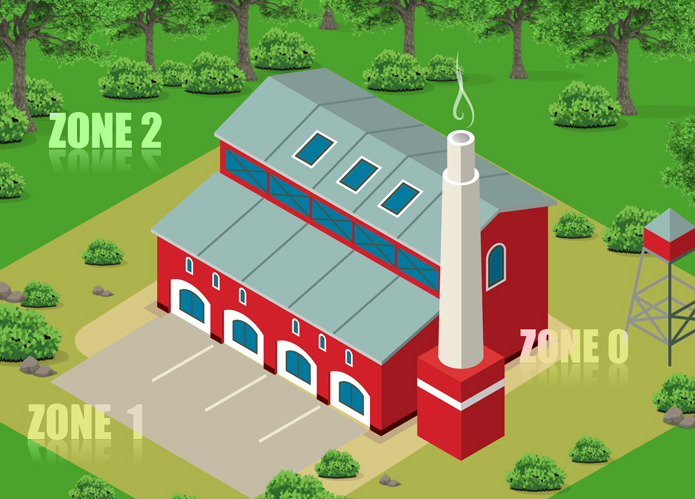
THE STATE is working on new regulations that will toughen enforcement of defensible space around commercial and personal properties in areas at risk of wildfires.
The current round of rulemaking by the Board of Forestry and Fire Protection is on Zone 0 — the area that stretches from the physical building out to five feet. The new rulemaking will add to the steps commercial property owners in high-risk areas are required to take.
The Proposed Rule for Zone 0 (Up to 5’)
The Zone 0 rule would bar grass, ornamental or native plants, shrubs, branches, fallen leaves and tree needles, weeds and combustible mulches including bark and woodchips from Zone 0.
Some wildfire specialists say the proposal is flawed and that adequately watered grass and shrubs can help protect the building in case of a wildfire. If well watered, they can reduce the temperature around the structure, catch embers and keep them from starting a fire.
The rule makes an exception for potted plants. Most trees would be barred from the zone, although mature trees without low-hanging branches may be allowed.
No items that are likely to be ignited by embers would be allowed, including:
- Timbers
- Firewood
- Synthetic lawn
- Trellises
The roof and rain gutters must be kept clear of leaves and needles. Areas under decks, balconies and stairs must be kept free of vegetative material and combustible items. Any gates or fencing constructed from combustible materials may not be attached to the home or other structures.
Zone 1 (5’-30’)
Under current Board rules, at-risk building owners must:
- Remove dead leaves, pine needles and debris.
- Trim overhanging branches to at least 10 feet away from chimneys.
- Keep trees pruned to maintain spacing.
- Maintain space between trees and shrubs.
Zone 2 (30’-100’)
Under current Board rules, at-risk building owners must:
- Let grass grow no more than four inches tall.
- Maintain clear spacing between shrubs and trees.
- Remove dead vegetation and fallen leaves.
- Prune lower branches of trees.
- Ensure outbuildings and propane tanks have 10 feet of clearance and no flammable vegetation nearby.
Is Your Commercial Property Affected?
Properties in these areas are required to comply with the rule:
State Responsibility Areas (SRAs) – The state is financially responsible for preventing and suppressing wildfires in these areas. SRAs do not include land within city or certain county boundaries. You can check if your property is in an SRA here.
Very High Fire Hazard Severity Zones in Local Responsibility Areas – These are areas at high risk of wildfire where local agencies, like city or county fire departments, are primarily responsible for wildfire protection and emergency response. You can check if your home is in a high fire hazard zone here.
Once finalized, the rules will apply immediately to new construction, with existing properties receiving a three-year phase-in period. If you have questions or concerns about these proposed rules, give us a call.
